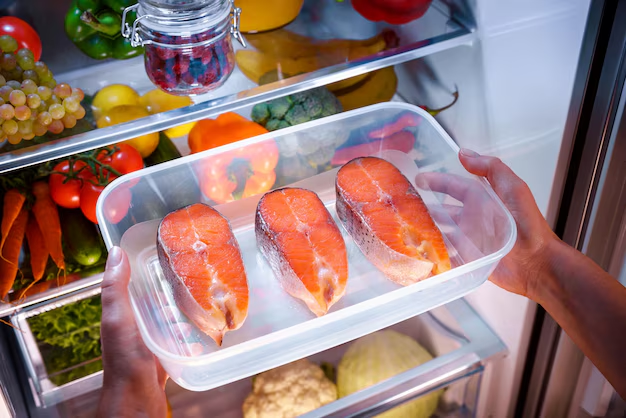How Long Does Fresh Pet Food Stay Good in the Fridge? Essential Storage Tips & More
If you're a pet parent, you've likely asked yourself: how long does fresh pet food last in the refrigerator? With the rise in popularity of fresh pet food diets, it's essential to store these foods properly to maximize their shelf life and ensure your furry friends enjoy nutritious meals safely.
In this guide, we'll explore the nuances of fresh pet food storage, discuss best practices, and provide practical tips to help you navigate your pet's dietary needs confidently.
🐶 What is Fresh Pet Food?
Fresh pet food generally refers to refrigerated or frozen meals made from natural ingredients like meats, vegetables, and grains. These meals often avoid preservatives and artificial additives, which appeal to many pet owners desiring a more wholesome diet for their pets. Such foods resemble the kind of nutrition pets would get in the wild, often featuring raw or minimally processed ingredients.
Key Characteristics of Fresh Pet Food:
- Made from human-grade ingredients.
- Typically requires refrigeration.
- Limited shelf life compared to kibble or canned food.
📆 Shelf Life of Fresh Pet Food in the Refrigerator
Most fresh pet food brands will provide specific guidelines on refrigeration and shelf life, but a general rule of thumb is:
- Opened fresh pet food: Approximately 3 to 5 days in the refrigerator.
- Unopened packages: Can last up to a week or two, depending on the brand's specifications and use-by date.
Opening a package starts the clock on spoilage as exposure to air can increase bacterial growth.
🚨 Signs Your Pet Food Has Gone Bad
Even within the suggested timeframe, always check for signs of spoilage:
- Unpleasant odor: Fresh pet food should smell fresh. An off-smelling aroma is a telltale sign of spoilage.
- Visible mold: Any discoloration or mold growth means the food should be discarded.
- Change in texture: If the food appears slimy or excessively dry, it’s time to throw it out.
📦 Proper Storage Practices for Fresh Pet Food
Store in the Right Container
- Use airtight containers: These help to maintain the food's moisture and freshness while also preventing odors from contaminating your refrigerator.
- Avoid leaving it in its original packaging: Once opened, transfer food into containers designed for refrigerator use.
Keep the Fridge Cool
- Maintain a consistent temperature: Your fridge should be at or below 40°F (4°C) for optimal preservation.
Organize for Rotational Use
- Place new purchases in the back and older items in the front. This practice helps ensure older food is used first, reducing waste.
🧊 Freezing Fresh Pet Food
Benefits of Freezing
Freezing is a handy method to extend the life of fresh pet food beyond its typical refrigerator window. Foods kept in the freezer can last several months when stored properly.
Steps to Freeze Fresh Pet Food:
- Portion the food: Use meal-sized portions to make thawing and serving simpler.
- Seal tightly: Use freezer-safe bags or containers to prevent freezer burn.
- Label with dates: This will help you keep track of how long each batch has been frozen.
Defrosting Tips
- Defrost in the refrigerator: Plan ahead by moving your pet's meal from the freezer to the fridge the day before. This maintains the food's integrity.
- Do not refreeze: Once thawed, refreezing can degrade the quality and safety of the food.
🔄 Transitioning Your Pet to Fresh Food
If you are contemplating a switch to fresh food for your pet, gradual transition is vital. This method helps prevent digestive upset and ensures your pet adapts comfortably.
Transitioning Steps:
- Start by mixing: Incorporate a small portion of fresh food into your pet's current diet.
- Gradually increase: Over a week, increase the proportion of fresh food while decreasing the old food.
- Monitor closely: Watch for any signs of distress or allergies in your pet.
❓ Commonly Asked Questions About Fresh Pet Food Storage
How can I tell if my pet food is still good?
Look for a fresh smell, consistent texture, and lack of mold. Always trust your senses—if in doubt, it's safer to err on the side of caution.
Can I leave fresh pet food out overnight?
It is not advisable. Fresh pet food should be out for no longer than 2 hours. Beyond that, the risk of bacterial growth increases.
Is it safe to feed slightly expired fresh pet food?
It’s best not to take chances with expired food, as it can lead to health issues for your pet.
🗂️ Handy Storage Cheatsheet
Here’s a quick reference to keep your pet's meals fresh and safe! 📝
- Opened Fresh Pet Food: 🗓️ Store for 3-5 days in the fridge.
- Unopened Fresh Pet Food: 📦 Check use-by dates.
- Freezing: ❄️ Portion, seal, and date for lasting freshness.
- Signs of Spoilage: 🤢 Smell, texture change, mold.
- Optimal Fridge Temperature: 🌡️ At or below 40°F (4°C).
By following these guidelines, you'll ensure that your pet's meals are both delicious and safe, supporting their health and happiness.
Finally, remember that each pet may react differently to fresh foods. Regular communication with your vet can offer additional insights tailored to your pet's specific needs, helping you make well-informed food choices that support their wellbeing.
